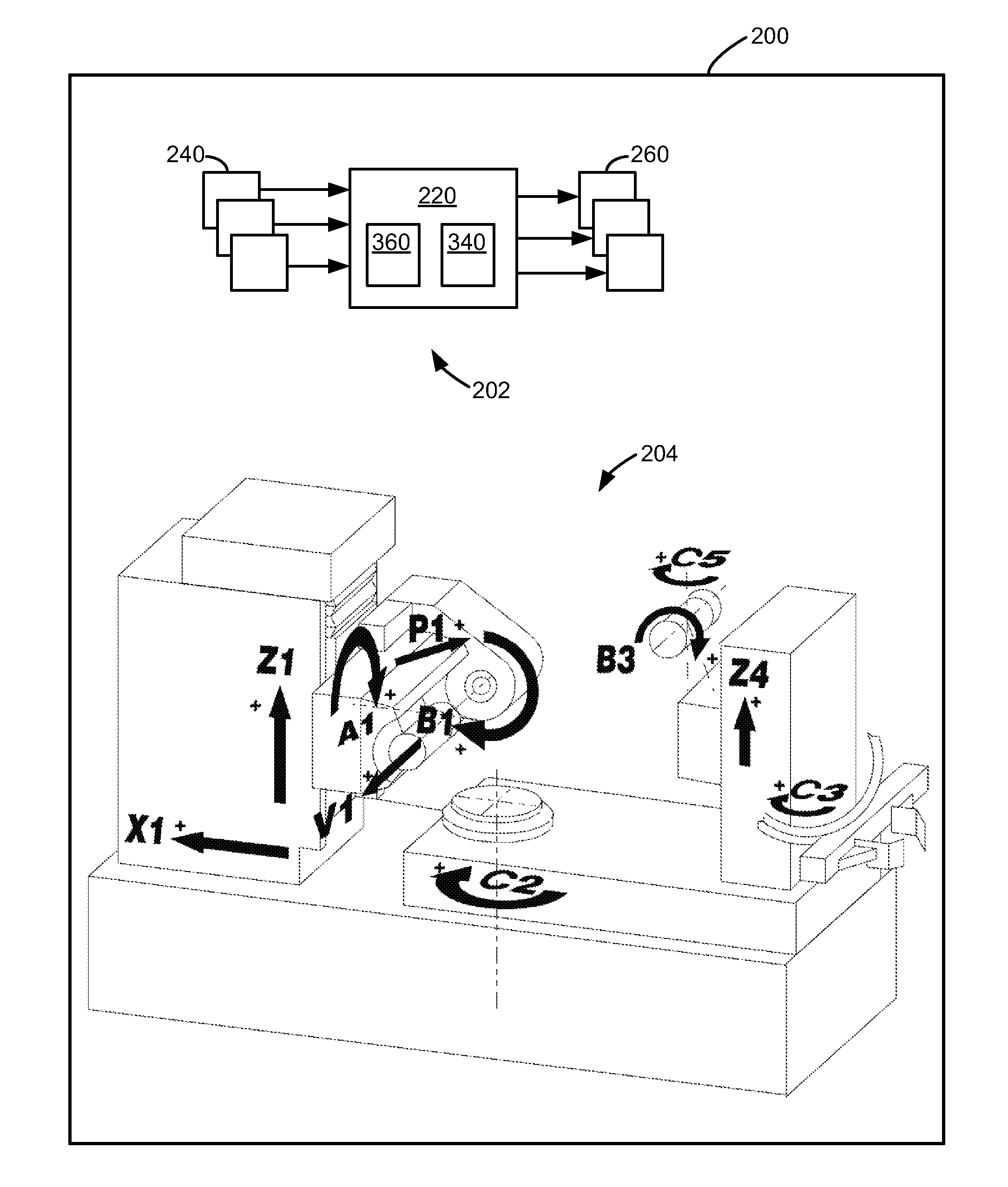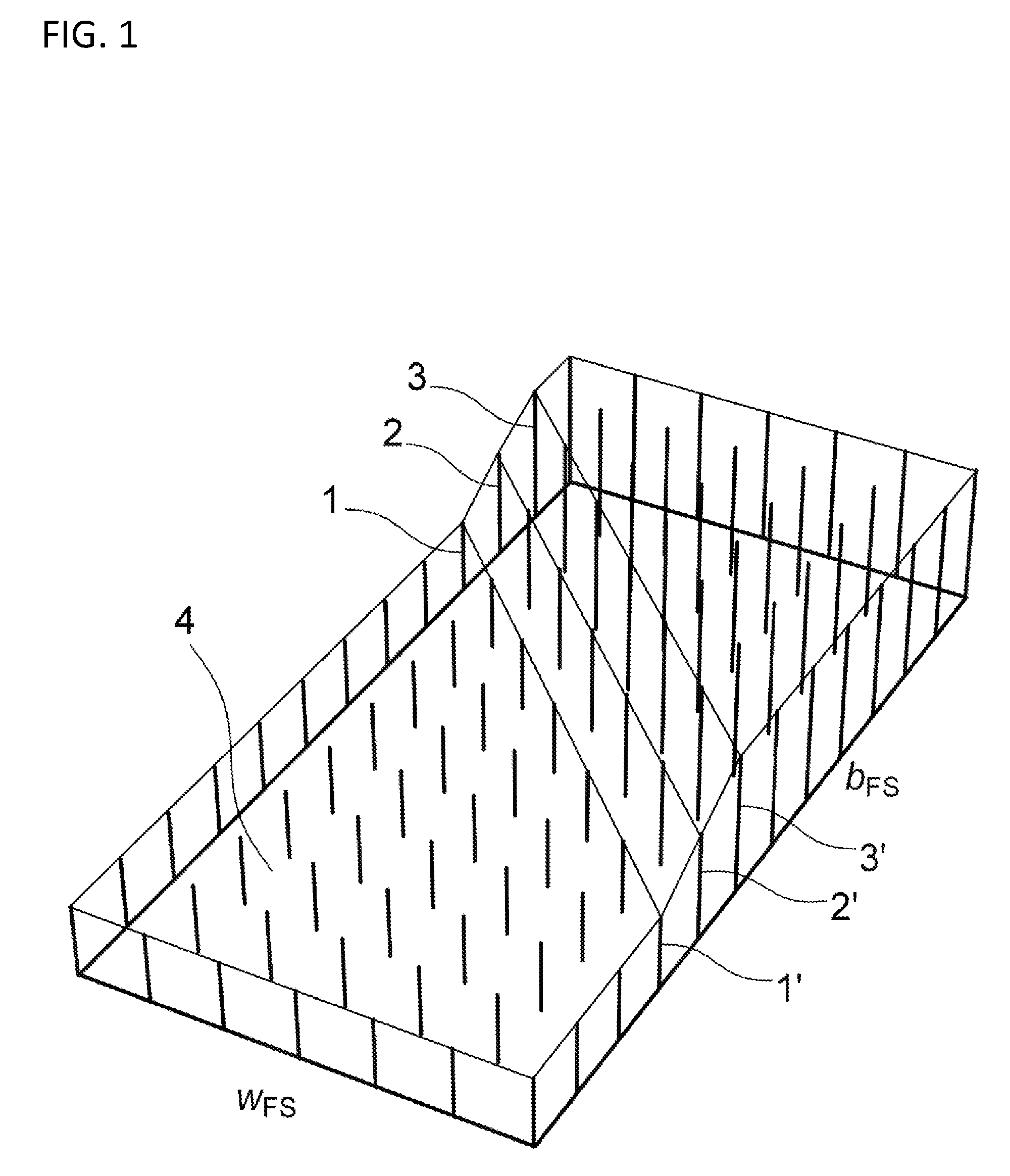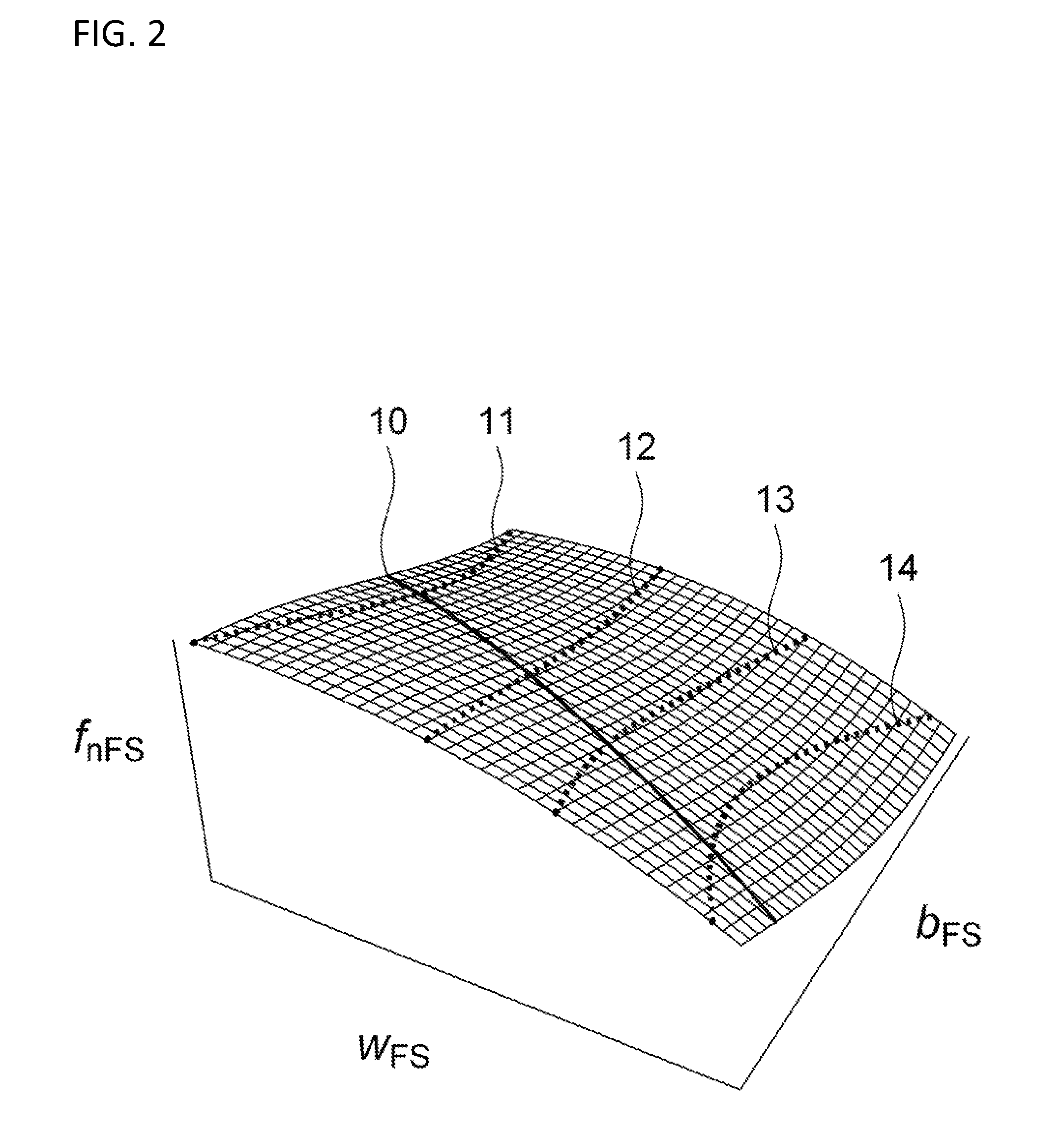Method of dressing a tool
a tool and dressing technology, applied in the direction of total factory control, programme control, electric programme control, etc., can solve the problems of large number of strokes, and inability to influence the shape of the profile only with limitations during the dressing process, so as to prevent the undercutting of the gearing, increase the control of the resulting modifications, and improve the effect of production advantages
- Summary
- Abstract
- Description
- Claims
- Application Information
AI Technical Summary
Benefits of technology
Problems solved by technology
Method used
Image
Examples
application examples
[0459]Some simple application examples will be described in the following for which in part the advantage of the present disclosure described here with respect to the prior art will be illustrated and which at the same time are intended to illustrate the method a little.
[0460]A particular subclass of modifications which can be produced using the method described here and which is already of great relevance today is represented by modifications which are given by a second degree polynomial in w and z. Such modifications ƒP2 can generally be described by
ƒP2(wF,zF)=Aw0z0+Aw1z0·wF+Aw0z1·zF+Aw1z1·wF·zF+Aw2z0·wF2+Aw0z2·zF2 (101)
where the coefficients A are real numbers freely selectable within certain limits. If ƒP2 is resolved in accordance with equation (100) in FFtC, FFtL and FKFt and if the approach
FFtC(XF)=KF02·XF2+KF01·XF+KF00
FFtL(XF)=KF11·XF+KF10
FKFt(XKF)=KKF2·XKF2+KKF1·XKF (102)
with XKF=wF sin ρKF+zF cos ρKF is selected, a coefficient comparison produces 6 equations from which...
PUM
| Property | Measurement | Unit |
|---|---|---|
| surface geometry | aaaaa | aaaaa |
| specific radius | aaaaa | aaaaa |
| surface | aaaaa | aaaaa |
Abstract
Description
Claims
Application Information
 Login to View More
Login to View More - R&D
- Intellectual Property
- Life Sciences
- Materials
- Tech Scout
- Unparalleled Data Quality
- Higher Quality Content
- 60% Fewer Hallucinations
Browse by: Latest US Patents, China's latest patents, Technical Efficacy Thesaurus, Application Domain, Technology Topic, Popular Technical Reports.
© 2025 PatSnap. All rights reserved.Legal|Privacy policy|Modern Slavery Act Transparency Statement|Sitemap|About US| Contact US: help@patsnap.com



